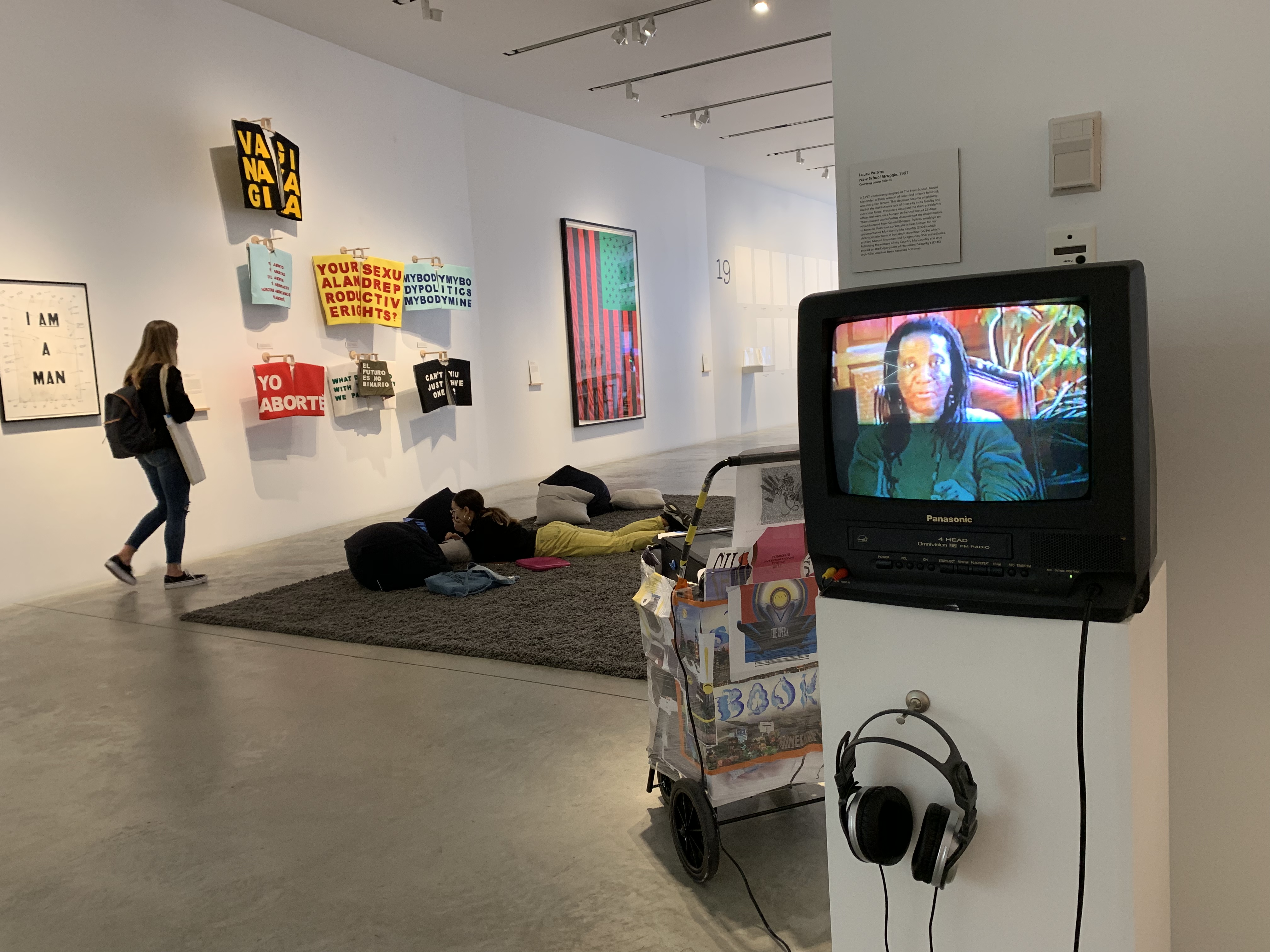Nestled in the back corner of the Sheila C. Johnson Design Center, the Anna-Maria and Stephen Kellen Gallery is currently home to “In the Historical Present,” an exhibition that features interactive art pieces and provides a space designed to foster community on campus.
Developed by curators Macushla Robinson (MA Liberal Studies ‘17) and Anna Harsanyi (BA Liberal Arts ‘08), “In the Historical Present” is a showcase of art centered around the New School’s year-long Centennial celebration. With commissioned works by 13 artists, the exhibition is a commentary on the school’s legacy, with pieces incorporating themes of protest, sexuality and race. “I think that the idea of the historical present [is] more like a metaphorical vessel for holding the complexity of a place that calls itself the New School, celebrating 100 years, [and] the paradox of that whole concept,” Robinson said.
The exhibition analyzes the highs and lows of the New School’s 100-year history. A piece titled “19” by Sheila Bridges (AAS Interior Design ‘93) is featured in the exhibition, and explores the subject of race relations within administrations and institutions. Phrases like “White Privilege” and “White Supremacy” replace general names for white paint to explore the pervasive issues of slavery and colonialism in modern society.
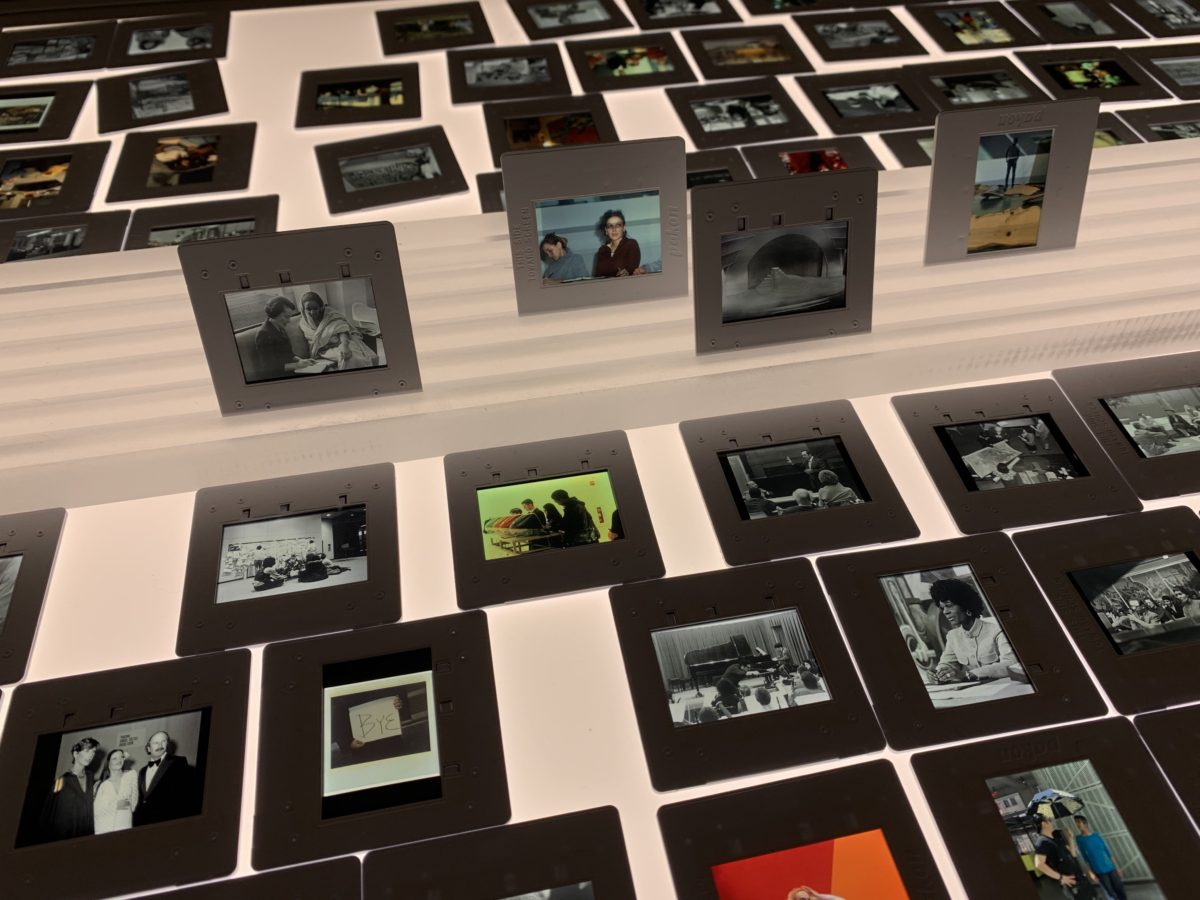
The curatorial duo worked together to develop the exhibition rather quickly, Robinson shared. They finished the show with three years’ worth of planning in just one year’s time. “We were asked to curate something in response to the Centennial at the New School. That creates quite different conditions for how an idea is generated. So, the catalyst for the show is this event,” Robinson said, referring to the 100 Years New celebration that will take place next month.
Robinson and Harsanyi said that their goal was to create an exhibition that is representative of the varied New School community. “The students are making the institution in many ways. So, as much as the institution exists within its own parameters, historically, the students here really [have] pushed back against that and had a certain level of a refusal to accept a certain discourse,” said Harsanyi.
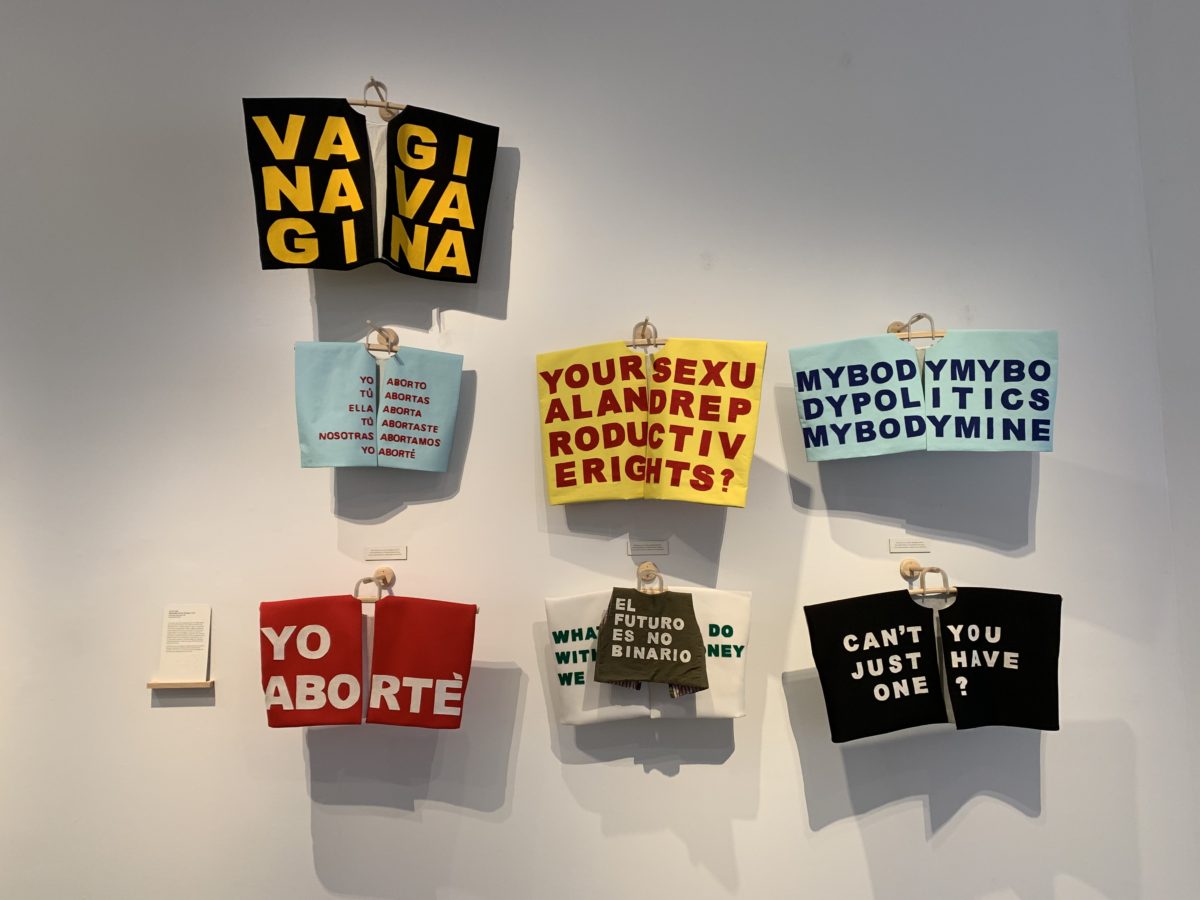
An interactive section of the gallery features texts, posters and photo slides from the New School’s archives, showcasing the history of protest and power within the school’s community. “It’s weird, because I’ve never been in a gallery like [this] before, where you’re just openly hanging out,” said fourth-year Culture and Media major Lindsey Garretson.
The exhibition also works as a community-building space. Fixed in the center of the gallery is a carpet with pillows and beanbags, strategically placed to allow students to digest the art. “[I like] the way that they’ve made the space for people to really engage. We’ve had people come and just sit on the carpet and it’s really cool,” said Garretson, who works as a security guard at the exhibition.
“We’re really interested in the movement in between historical touchstones and telling multiple stories that might not even be considered important, like the daily life of the school, or the social history of the school, [or] what students do when they’re just in their dorms hanging out. That’s an important historical concept,” said Harsanyi.
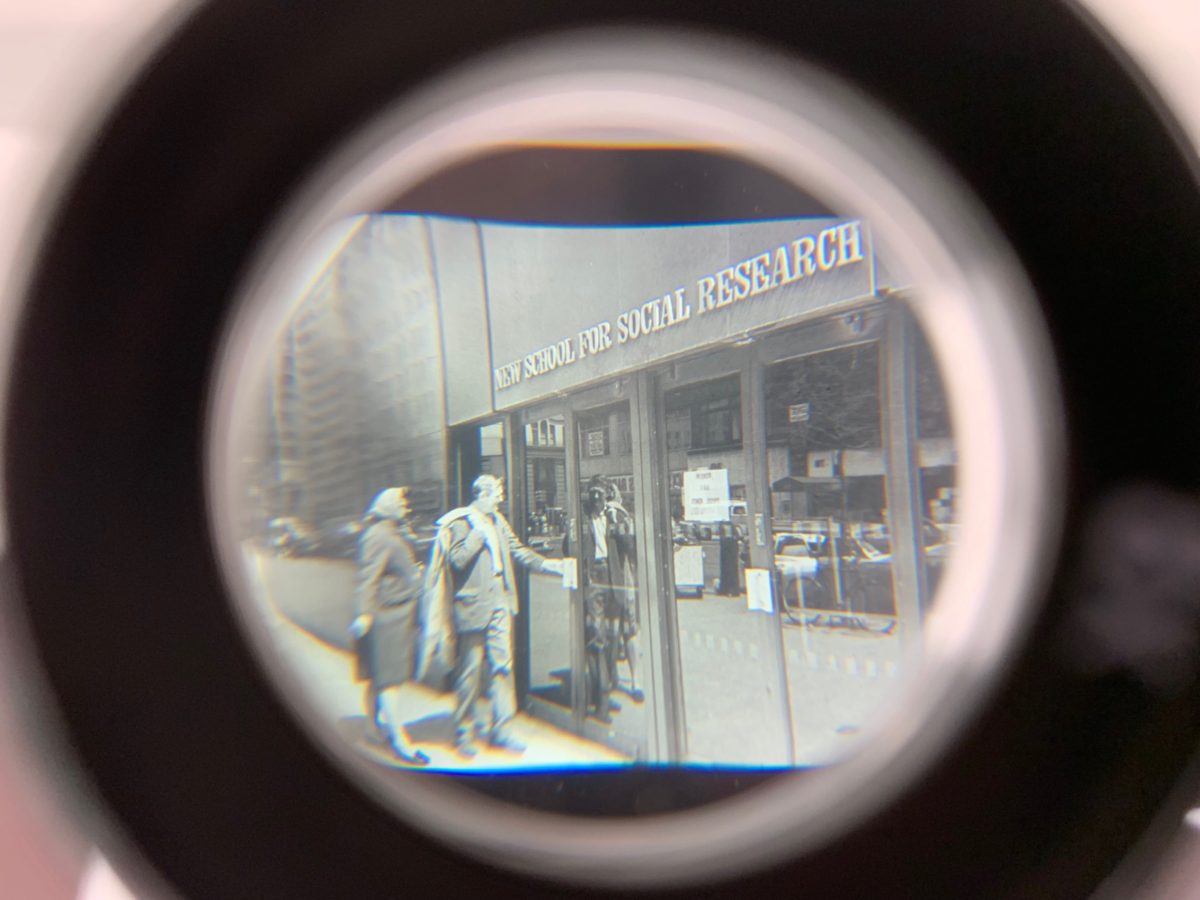
Robinson and Harsanyi have organized a series of programs and events to encourage further examination of the past and plan for the future. These events, which began on Sept. 11, will be held in the Anna-Maria and Stephen Kellen Gallery and hosted by featured artists. One event series, titled “Black Lunch Table,” is a collaboration started by artists Jina Valentine and Heather Hart that intends to discover gaps in record-keeping for artists of color in art history and bring attention to them through conversation.
“In the Historical Present” is an enlightening, immersive art space nestled right on campus. Combining social commentary and New School history with excellently crafted art pieces, the gallery is a fitting addition to the Centennial celebration.
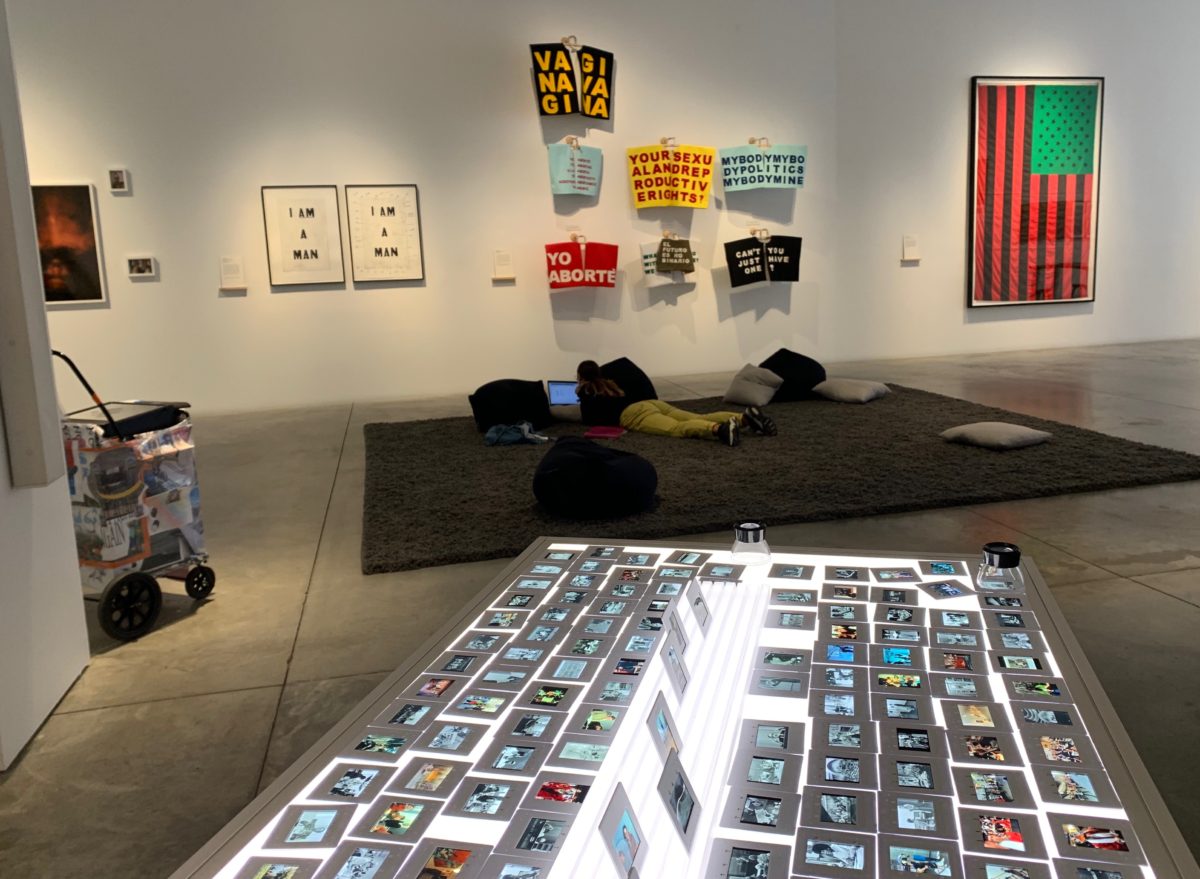
“It’s really hard to pick a favorite piece. I don’t know if you can.” Robinson said. “I always say that having an exhibition is how I imagined having a baby is. You forget all the pain when everything goes up on the wall and you see it and it’s real. That’s a very euphoric experience.”
“In the Historical Present” will be on display in the Anna-Maria and Stephen Kellen Gallery until Oct. 6. More information about future events hosted by Robinson and Harsanyi for “In the Historical Present” can be found on their website.

